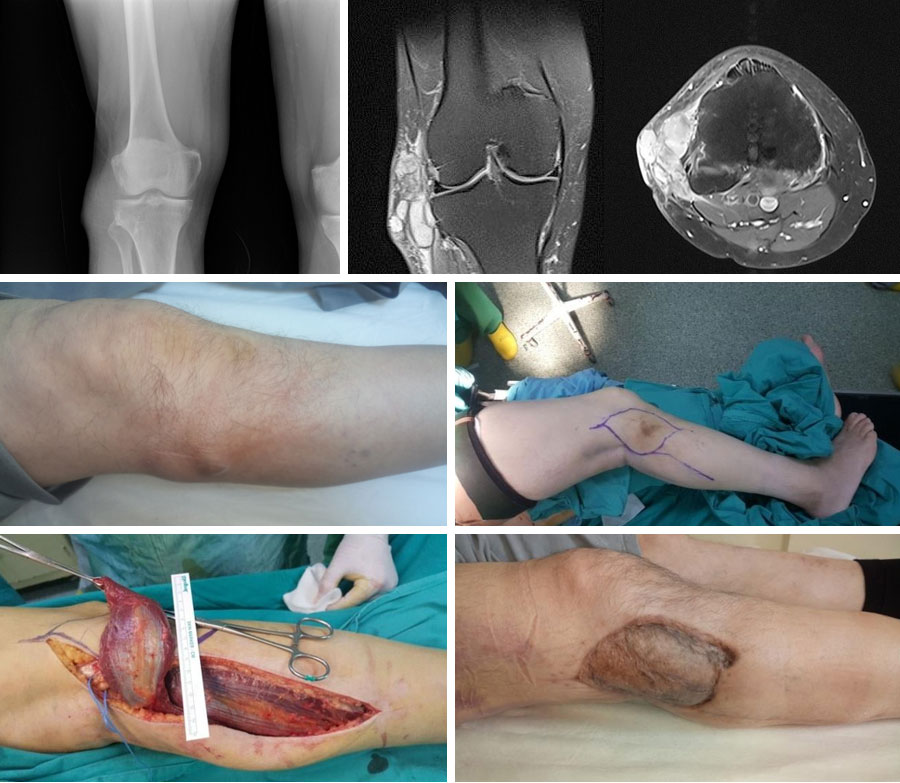CLEAR CELL SARCOMA
- Hits: 1276
Clear cell sarcoma is a rare malignant soft tissue tumor. Unlike other soft tissue sarcomas, clear cell sarcoma often occurs in young patients and around the joints (knee, foot, and ankle).
Patients with clear cell sarcoma often present with swelling. The size of the tumor is usually less than 10 cm and is rarely associated with pain.
On physical examination, the swelling is usually soft, mobile, and painless.
In patients with clear cell sarcoma, we most commonly use MRI with medication as the imaging modality. MRI gives us detailed information about the location, size, borders, and contents of the tumor. MRI is also used to plan surgery, evaluate response to chemotherapy and radiotherapy, and monitor for recurrence.
Clear cell sarcoma is diagnosed by biopsy after clinical and radiologic evaluation. The biopsy is often performed using a closed procedure with special needles. It is important that the physician who performs the biopsy is an orthopedic oncologist who specializes in bone and soft tissue tumors, and that the pathologist who evaluates the biopsy sample is experienced in this area.

Patients diagnosed with clear cell sarcoma will undergo a CT scan, whole-body MRI or PET-CT to detect metastases.
The primary treatment for clear cell sarcoma is surgical removal of the tumor with wide margins. The tumor that is not cleanly removed with wide margins has a nearly one hundred percent recurrence rate and is prone to metastasis. For this reason, it is important that the surgeon performing the surgery is an orthopedic oncologist with experience in this area.
Radiotherapy is given before or after surgery to make clear cell sarcoma surgery easier and to reduce the chance of recurrence. Although there are advantages and disadvantages to using radiation before or after surgery, there is no absolute superiority of one over the other.
Clear cell sarcoma is not routinely treated with chemotherapy. Chemotherapy is used primarily in the presence of metastases. In addition, chemotherapy is considered for deep-seated and large tumors.
Patients diagnosed with clear cell sarcoma should be followed for many years at regular intervals for recurrence and metastasis, meaning spread to other parts of the body.

